- Home
- Tom Clancy
State of Siege o-6 Page 3
State of Siege o-6 Read online
Page 3
As the door shut, Hood found himself getting angry again. Whether he was angry at what he was leaving or what he was going to, he just didn’t know. Op-Center psychologist Liz Gordon once told him that confusion was a term we’d invented to describe an order of things that was not yet understood.
He hoped so. He truly did.
THREE
Paris, France
Tuesday, 7:32 A.M.
Every section of Paris is rich with something, be it history, hotels, museums, monuments, cafés, shops, markets, or even sunshine. Just northeast of the Seine, beyond the half-kilometer-long Le Port de Plaisance de Paris de l’Arsenal — a canal for recreational boating — is a region rich with something a little different: post offices. There are two of them a few blocks apart on the Boulevard Diderot and a third building between them, just to the north. Other post offices are scattered throughout the district. Most of them derive the bulk of their business from the tourists who come to Paris year round.
Each morning at five-thirty, an armored truck operated by the Banque de Commerce begins its rounds of these post offices. It carries an armed driver and one armed guard up front and another armed guard in back, along with postage stamps, money orders, and postal cards to deliver to the five post offices. When it completes its rounds, the armored truck is carrying canvas sacks loaded with the counted, banded cash collected by each post office the day before. Typically, the cash is international currency equivalent to three-quarters of a million to one million U.S. dollars.
The truck follows the same route every day, making its way northwest and then turning up the heavily traveled Boulevard de la Bastille. Once the armored car is past the Place de la Bastille, it deposits its cargo at a bank building on the Boulevard Richard Lenoir. The policy of the Banque de Commerce, like many armored car companies, is to adhere to the same path every day. That way, the drivers will know the route and its character and recognize any changes. If there’s an electrical team working on a streetlight or a road crew working on a pothole, the driver is informed ahead of time. A two-way radio is always turned on in the cab and is monitored by a dispatcher at the Banque de Commerce office across the river on the Rue Cuvier near the Jardin des Plantes.
The one constant — paradoxically, the one constant that always changes — is traffic. The men watch from behind bulletproof windshields as faster-moving cars and trucks weave around the heavily armored four-ton vehicle. Along Le Port de l’Arsenal, boat traffic is also constant, mostly motorboats from fourteen to forty feet in length. They come here from the river so that crews can dine, rest, take on fuel, or undergo repairs at the docks.
The men in the armored truck did not notice anything unusual on this sunlit morning except for the heat, which was even worse than it had been the day before. And it wasn’t even eight A.M. yet. Though their dark gray caps were hot and snug, the men wore them to keep the sweat from dripping into their eyes. The driver wore an MR F1 revolver; the guard in the passenger’s seat and the man in the back both carried FAMA assault rifles.
Traffic was heavy at this hour, as trucks made deliveries and small cars maneuvered to get around them. None of the men in the armored car thought anything was out of the ordinary when a truck in front of them slowed to let a Citroën pass. The truck was an old rig with battered, dirty-white metal siding and a green canvas curtain in the back.
The driver’s eyes drifted to the left, toward the canal. “I tell you,” he said. “I would like to be out there today on my little Whaler. The sun, the rocking of the waves, the quiet.”
The other man’s eyes snapped over as the masts and trees rushed by. “I’d be bored.”
“That’s because you like to hunt. Me? I’d be content to sit in the breeze with my cassette player and fishing—”
The driver swallowed the rest of the sentence and frowned. Neither the caps nor the weapons nor the open radio nor the familiarity of the route mattered when the old truck in front stopped suddenly, and the curtain in back was pulled aside. A man stood in the back. Another man walked around from the passenger’s side. Both wore camouflage uniforms, bulletproof vests, gas masks, equipment belts, and thick rubber gloves. Each man held a shoulder-mounted rocket-propelled grenade launcher. The man in the truck leaned to the passenger’s side slightly, angling himself so that the back of the RPG was facing away from the cab of their truck. The other man stood on the street, the RPG angled upward slightly.
The guard in the truck reacted immediately. “Emergency!” he said into the open microphone. “Two masked men in truck, license 101763, have stopped in front of us. They are armed with rocket launchers.”
A heartbeat later, the men fired.
There was a faint whoosh as twin spikes of yellow orange flame shot from the rear of the grenade launchers. At the same time, a smooth, steel-jacketed, pear-shaped projectile rocketed from the barrel of each tube. The grenades hit the windshield on either side and exploded. The guard in the passenger seat raised his gun.
“The windshield held!” the guard cried triumphantly.
The driver looked into the right and left side mirrors. Then he started to nose to the right, into oncoming traffic. “Attempting evasive maneuver to the north lanes—” he said.
Suddenly, both men screamed.
High-end bulletproof glass, made of plastic laminate, is designed to withstand even close-proximity blasts from hand grenades. It may shatter in a single-hole or web pattern, but it’ll hold without fragmentation for one or possibly two assaults. After that, there are no guarantees. Whoever is behind the glass — the driver of an armored car or limousine, the employee at a bank, prison, parking or transit booth, or federal office building — is supposed to call for backup and evacuate the target area if possible. In the case of an armored car, even if the occupants can’t drive off, the driver and passenger are both armed. In theory, once the glass is breached, the attackers are equally at risk.
But the grenades that had been fired from the truck were two-chambered. The front chamber contained an explosive. The larger back chamber, which was shattered in the blast, contained disulphuric acid.
The windshield had broken the same way in two spots, a sunburst pattern caused by high-velocity fragmentation: a nearly inch-wide crater at the center with filament-thin cracks radiating from it. Some of the acid had been blown through the hole, splattering the driver and passenger in the face and lap. The rest of the acid ate through the cracks by dissolving the non-chemically inert polymers that were a component of the glass.
Etienne Vandal and Reynold Downer slung the grenade launchers over their shoulders. Downer jumped from the back as the armored car slammed into the right rear corner of the truck. The truck skidded to the right, the armored car to the left, and both came to a stop. Vandal and Downer jumped onto the hood of the armored car. All they had to do was kick the windshield to knock it in. It came apart just as Vandal had said it would. The glass was thicker and heavier than Downer had expected, and the acid residue caused the rubber heel of his boot to smoke. But he only had a moment to think about that. The Australian pulled an automatic from a holster he wore on his right hip. He was standing on the passenger’s side. As cars in the other lanes slowed and watched and then sped away, Downer fired a single shot into the forehead of the guard. Vandal did the same on the other side.
The lone guard in the sealed cargo compartment called the dispatcher from his own secure radio in the back. Vandal had known he would do that because, after leaving the military with an impeccable record, the lieutenant had easily landed work as a security guard for the Banque de Commerce armored cars. He had served on an armored vehicle just like this one for nearly seven months. Vandal also knew that at this point in the journey, with traffic as heavy as it was, it would take the police emergency response team at least ten minutes to get there. And that was more than enough time to finish the job.
From studying the videotapes, the men had ascertained that the armor used in the cars hadn’t changed in the months since Vanda
l had left his post. In the military, upgrades of vehicles were ongoing in order to keep up with new ammunition ranging from armor-piercing plasma jets to more powerful land mines, as well as strategic needs such as lighter weight for greater speed and mobility. However, the private sector was slower to make changes.
Careful to avoid the acid that was still burning through the dashboard, Reynold Downer slid into the cab. Between the seats, on the floor, was a deep, narrow well that was used to store extra ammunition. It was accessible from both the front and back of the armored car. Downer pushed the dead guard against the cab door and opened the panel that accessed the ammunition chamber. Then he reached down to his belt and removed a small chunk of C-4 from one of the pouches. He snaked his right hand into the well, fixed the C-4 to the panel that opened into the rear of the van, and plugged in a small timer. He set it for fifteen seconds, then dropped a tear gas canister behind it and shut the door. Climbing over the dead guard, he opened the door and stepped onto the roadway.
While Downer was doing that, Vandal knelt on the hood. He took a pair of tin shears from his equipment belt and pulled back the driver’s right-hand sleeve. The key that unlocked the back of the van was on a metal band attached to the driver’s wrist. Vandal pulled the man’s forearm toward him and snipped through the band. As he did, the C-4 exploded. It not only ripped a hole in the rear panel, it destroyed the container of tear gas. Though some of the gas leaked into the cab, the bulk of it poured into the back.
Traffic had stopped well behind the armored car. The road was clear and the backup would slow police even more. When Vandal was finished, he slid from the hood and joined Downer around back.
Neither man spoke. There was always a chance that the open radio would pick up their voices. As Downer stood watch, Vandal unlocked the door. Gas rolled out as he opened it, along with the gasping security guard. He had tried to get the gas mask that was stored in a chest in the back. Unfortunately, the mask had been placed there with the expectation that a gas strike would be made outside the van, not inside. He never reached the chest, let alone the mask. The guard hit the asphalt and Downer stomped hard on the side of his head. The man stopped moving, though he was still breathing.
As Vandal climbed inside, Downer heard the distant hum of an approaching helicopter. The black Hughes 500D swung in from over the river, which was where Sazanka’s family owned a waterfront shipping facility. The Japanese pilot had stolen the helicopter so it couldn’t be traced to them. He slowed as he flew over the boulevard. The Hughes has exceptional flight stability in slow and hover modes, as well as a tolerable downdraft. It also has room for five people and cargo, which was perhaps the most important consideration.
Barone, who had been driving the truck, ran back. As the Uruguayan pulled on his gas mask, Georgiev opened the aft door of the helicopter. He lowered a line with a hook. Attached to the iron hook was a twelve-by-seven-foot metal platform with large nylon nets along the sides. While Downer made certain that no one interfered, Vandal and Barone stood in the thinning clouds of tear gas and loaded the sacks of money onto the platform. At five minutes into the operation, Georgiev hauled up the first load.
Downer glanced at his watch. They were running slightly behind schedule. “We need to speed things up!” he shouted into the specially built-in mask radio.
“Calm down,” Barone said. “We’re within the safety net.”
“That’s not good enough,” Downer said. “I want to be dead center, in the sweet spot.”
“When you’re in charge, then you give the orders!” Barone said.
“Same goes for you, mate,” Downer snapped.
Barone shot him a look through the faceplate of his gas mask just as the platform came back down. The men threw in a second batch. They heard police sirens in the distance, but Downer wasn’t worried. If necessary, they had the unconscious guard as a hostage. Fifty feet above, Sazanka watched the skies. The only event that would cause them to abort the mission and move out was the arrival of a police helicopter. Sazanka was looking out for that with the cockpit radar unit. Downer was watching Sazanka. If there was a blip, Sazanka would signal, and they’d move out.
The second load of bags went up. There was one more to go. Traffic had backed up nearly a quarter mile when people realized what was going on. There was no way to get through. The police would have to respond either with members of La Brigade Equestre or by air. The men continued to work quickly but efficiently. There was no sense of panic.
The third load went in. Suddenly, Sazanka raised his finger and moved it around in a quick circle. Then he pointed to the left. There was a police helicopter en route from the west. Georgiev lowered the platform again. As they’d planned, Barone climbed in, followed by Vandal. The Bulgarian didn’t reel the net in. Instead, the men all removed their gas masks, hooked them to their equipment belts, and began climbing the line. When the men were respectively twenty and ten feet up, Downer hopped onto the platform. Now Georgiev began reeling it in. While it rose, Downer steadied himself by holding the net siding with one hand while with the other he pulled the grenade launcher from his shoulder. Then he pulled off his gas mask so he could see more clearly, lay on his side, removed a projectile from the grenade pouch on his belt, and loaded the weapon. Above him, Georgiev helped Barone and Vandal climb back into the helicopter.
Sazanka climbed, quickly pushing the chopper to its maximum cruising speed of 160 mph. As he did, Downer made sure that both the barrel and the exhaust of the launcher were poking through the mesh siding. He didn’t want to incinerate the net and fall to his death.
Georgiev secured the platform with cables run through two eye hooks on the front and back side nearest the helicopter, but he left it hanging three feet below the open door of the helicopter’s aft compartment. From here, Downer could cover pursuit from any direction. Being close to the underbelly would also keep him from being knocked around by the winds and by the downdraft from the rotor. And it would be much more difficult for a sharpshooter on the ground or in the air to notice him in the shadow of the chopper.
While they waited for a possible pursuit, Sazanka held them to one thousand feet and took them northwest along the river. A small plane was waiting for them at a tiny airstrip outside of Saint-Germain. Once the men and money bags had been transferred from the chopper, they would fly south into Spain. There, the chaos of the simmering civil war would make it easy for them to buy their way in and then out of the country.
“There it is!” Georgiev shouted down. The big man was pointing toward the southwest.
Downer didn’t have to look up to see where the Bulgarian was pointing. He’d also just spotted the police helicopter. It was about two thousand feet up and a half mile away. As Vandal had expected, it was from the French Gendarmerie’s Special Intervention Group.
The white and blue police chopper flew toward them in a sweeping, downward arc. The SIG team would follow their usual operating procedure. They’d attempt to raise the fleeing chopper by radio, which they were probably doing now. When the men didn’t respond, the police chopper would stay in constant radio contact with ground forces. Even if they had medium-range weapons, the police wouldn’t attempt to shoot the chopper down. Not as long as it was over a populated area and carrying a million dollars in currency. When the Hughes landed, both air and land units would close in on it.
Vandal knew that the Paris police department relied on radar from the two nearby airports to monitor the skies over the city. They used Charles de Gaulle to the northeast in Roissy-en-France and Orly to the south. Vandal also knew that when an aircraft dropped under two hundred and fifty feet, radar was ineffective due to interference from surrounding buildings. He had Sazanka keep the Hughes at one thousand feet.
The police chopper came closer. The hotels of the northern bank of the river passed beneath them in quick succession. To his right, across the river, Downer saw the Eiffel Tower, dark and spidery in the misty morning. They were flying level with the top of the struc
ture.
The pursuing helicopter closed to within a quarter mile. They were still several hundred feet higher than the vehicle they were pursuing. The range of the grenade launcher was one thousand feet. According to the readout on the digital sight, the chopper was just out of range. Downer looked up at Georgiev. Vandal and Georgiev had both agreed that conversation over radios and cellular phones was too easy to intercept. Thus, once their gas masks were off, communication had to be muscular and old-fashioned.
“I need to be closer!” Downer yelled.
The Bulgarian cupped his thick hands around his mouth. “How much closer?” he shouted.
“Two hundred feet higher, three hundred feet back!”
Georgiev nodded. A door separated the cockpit from the aft cabin. The Bulgarian leaned through it and told Sazanka what Downer needed.
The Japanese pilot slowed and climbed. Downer watched the police chopper through his sight. The ascent brought them level with the other helicopter, and the decrease in speed narrowed the distance between them. The platform was jiggling up and down from the force of the rotor while the wind caused it to bump toward the stern. Aiming was difficult.
Downer sighted the cockpit of the police chopper. The optics of the grenade launcher did not magnify the target. Even so, Downer could see that someone was standing in the cockpit, leaning between the pilot and copilot and watching them with binoculars. Now that the two helicopters were level, they would finally be able to see Downer.
There was no time to wait for the police to get closer.
The Australian hunkered down on the platform, curling as tight as possible against the far side brace for the recoil. Again he sighted the cockpit of the pursuing aircraft. The shot didn’t have to be pretty; all he had to do was hit the enemy vehicle. He pulled hard on the heavy trigger.
The grenade left the barrel with a rush of air and a very loud pop. The launch knocked the platform backward with a sharp jolt, causing Downer to slide against the mesh siding. He lost the grenade launcher, which hit the platform with a ringing thunk. But he kept his eye on the projectile as it cut a thin, off-white contrail through the sky.

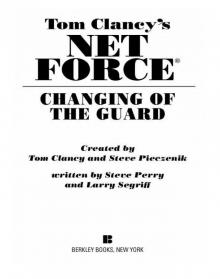 Changing of the Guard
Changing of the Guard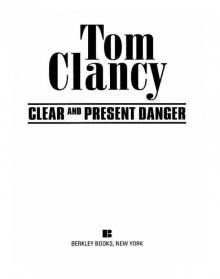 Clear and Present Danger
Clear and Present Danger Hounds of Rome
Hounds of Rome Breaking Point
Breaking Point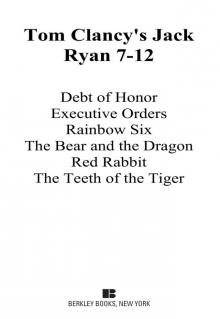 Tom Clancy's Jack Ryan Books 7-12
Tom Clancy's Jack Ryan Books 7-12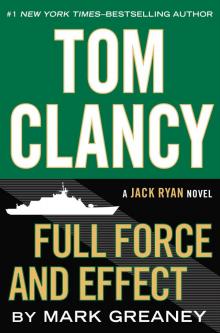 Full Force and Effect
Full Force and Effect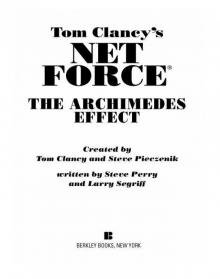 The Archimedes Effect
The Archimedes Effect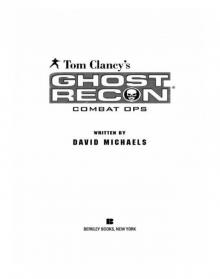 Combat Ops
Combat Ops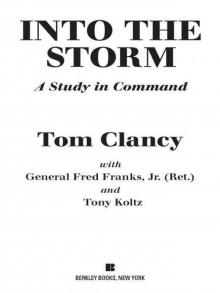 Into the Storm: On the Ground in Iraq
Into the Storm: On the Ground in Iraq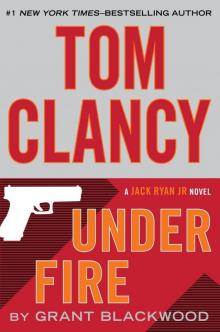 Under Fire
Under Fire Point of Impact
Point of Impact Red Rabbit
Red Rabbit Rainbow Six
Rainbow Six The Hunt for Red October
The Hunt for Red October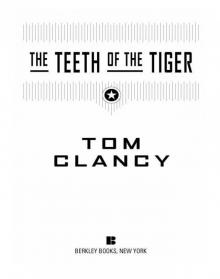 The Teeth of the Tiger
The Teeth of the Tiger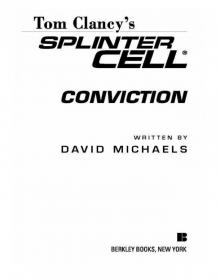 Conviction (2009)
Conviction (2009)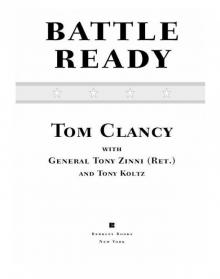 Battle Ready
Battle Ready Patriot Games
Patriot Games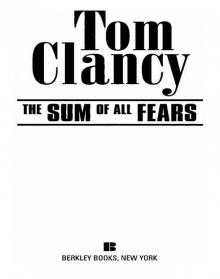 The Sum of All Fears
The Sum of All Fears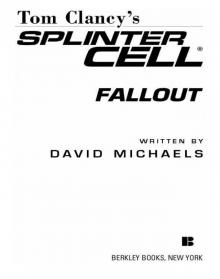 Fallout (2007)
Fallout (2007) Red Storm Rising
Red Storm Rising The Cardinal of the Kremlin
The Cardinal of the Kremlin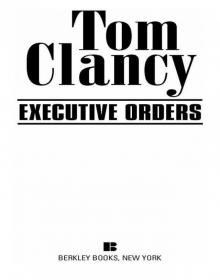 Executive Orders
Executive Orders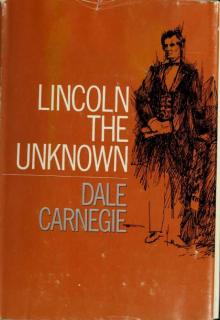 Lincoln, the unknown
Lincoln, the unknown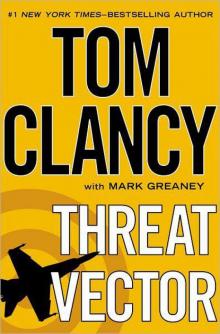 Threat Vector
Threat Vector The Hunted
The Hunted Shadow Warriors: Inside the Special Forces
Shadow Warriors: Inside the Special Forces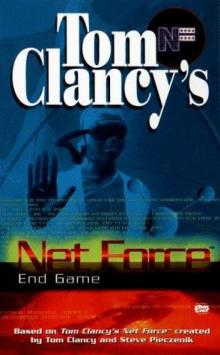 End Game
End Game Special Forces: A Guided Tour of U.S. Army Special Forces
Special Forces: A Guided Tour of U.S. Army Special Forces Locked On
Locked On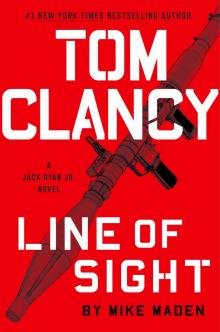 Line of Sight
Line of Sight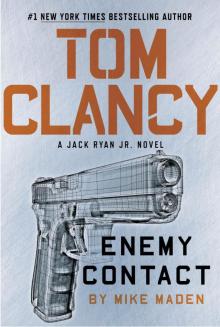 Tom Clancy Enemy Contact - Mike Maden
Tom Clancy Enemy Contact - Mike Maden Fighter Wing: A Guided Tour of an Air Force Combat Wing
Fighter Wing: A Guided Tour of an Air Force Combat Wing Springboard
Springboard Line of Sight - Mike Maden
Line of Sight - Mike Maden EndWar
EndWar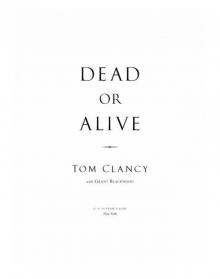 Dead or Alive
Dead or Alive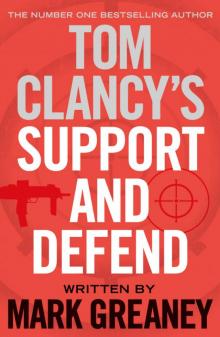 Tom Clancy Support and Defend
Tom Clancy Support and Defend Checkmate
Checkmate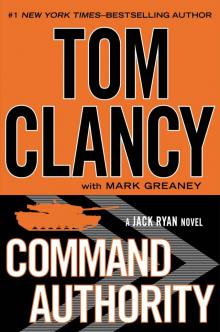 Command Authority
Command Authority Carrier: A Guided Tour of an Aircraft Carrier
Carrier: A Guided Tour of an Aircraft Carrier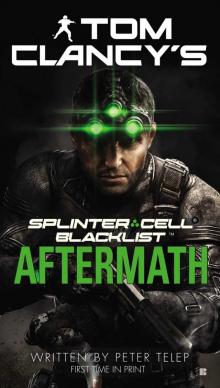 Blacklist Aftermath
Blacklist Aftermath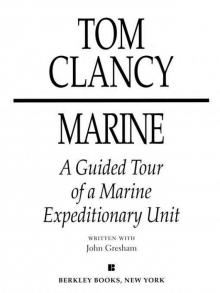 Marine: A Guided Tour of a Marine Expeditionary Unit
Marine: A Guided Tour of a Marine Expeditionary Unit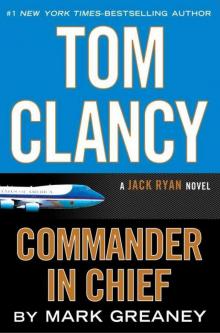 Commander-In-Chief
Commander-In-Chief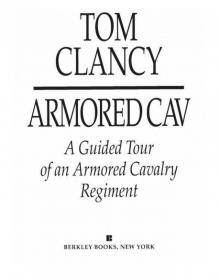 Armored Cav: A Guided Tour of an Armored Cavalry Regiment
Armored Cav: A Guided Tour of an Armored Cavalry Regiment Tom Clancy's Jack Ryan Books 1-6
Tom Clancy's Jack Ryan Books 1-6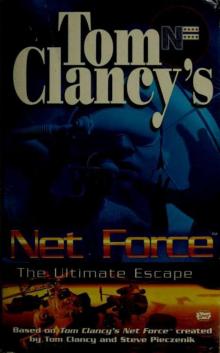 The Ultimate Escape
The Ultimate Escape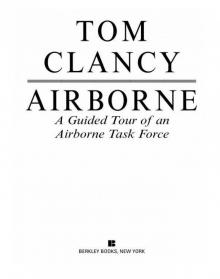 Airborne: A Guided Tour of an Airborne Task Force
Airborne: A Guided Tour of an Airborne Task Force Debt of Honor
Debt of Honor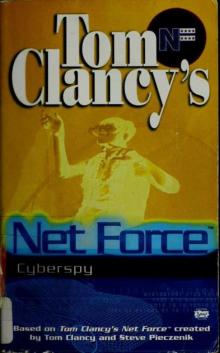 Cyberspy
Cyberspy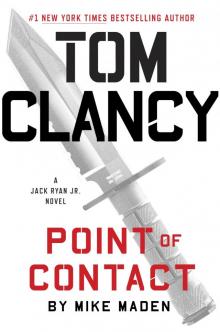 Point of Contact
Point of Contact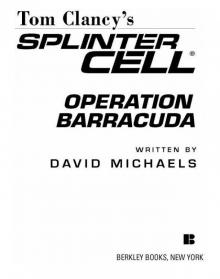 Operation Barracuda (2005)
Operation Barracuda (2005)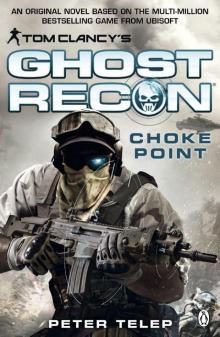 Choke Point
Choke Point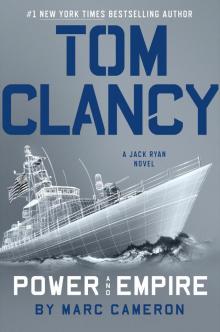 Power and Empire
Power and Empire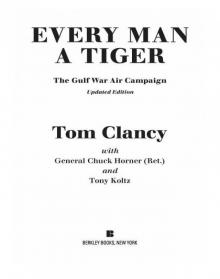 Every Man a Tiger: The Gulf War Air Campaign
Every Man a Tiger: The Gulf War Air Campaign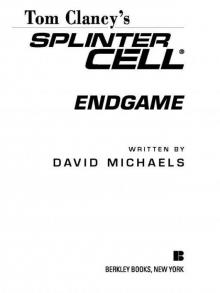 Endgame (1998)
Endgame (1998)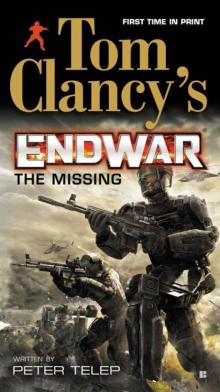 EndWar: The Missing
EndWar: The Missing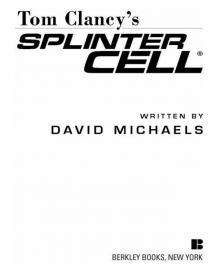 Splinter Cell (2004)
Splinter Cell (2004)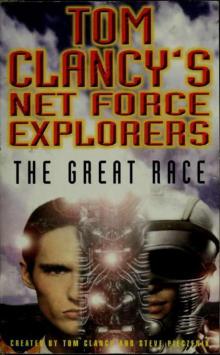 The Great Race
The Great Race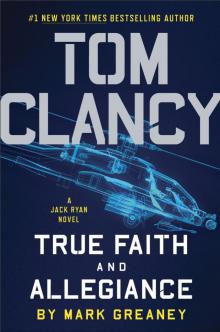 True Faith and Allegiance
True Faith and Allegiance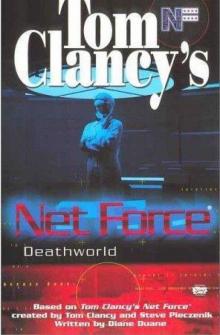 Deathworld
Deathworld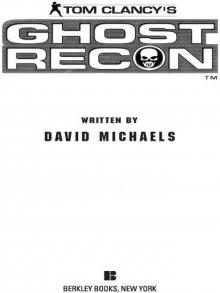 Ghost Recon (2008)
Ghost Recon (2008)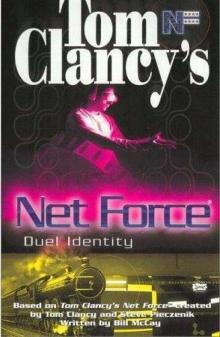 Duel Identity
Duel Identity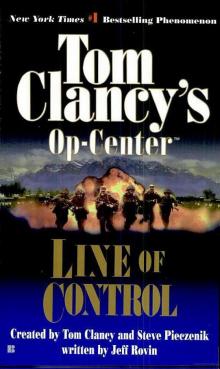 Line of Control o-8
Line of Control o-8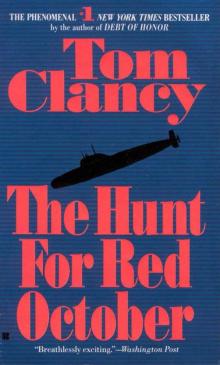 The Hunt for Red October jr-3
The Hunt for Red October jr-3 Hidden Agendas nf-2
Hidden Agendas nf-2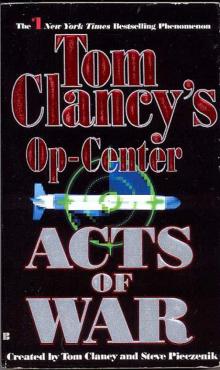 Acts of War oc-4
Acts of War oc-4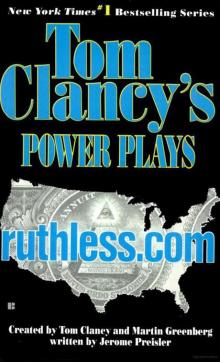 Ruthless.Com pp-2
Ruthless.Com pp-2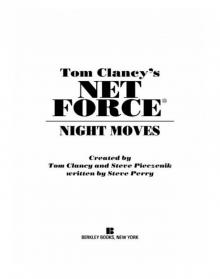 Night Moves
Night Moves The Hounds of Rome - Mystery of a Fugitive Priest
The Hounds of Rome - Mystery of a Fugitive Priest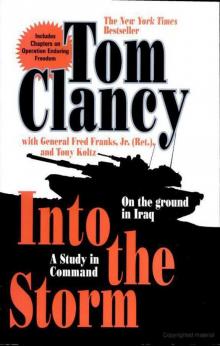 Into the Storm: On the Ground in Iraq sic-1
Into the Storm: On the Ground in Iraq sic-1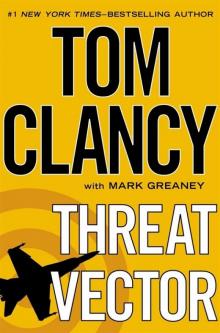 Threat Vector jrj-4
Threat Vector jrj-4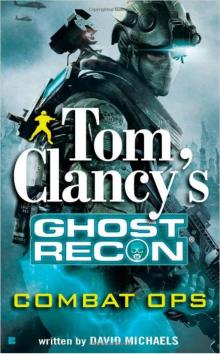 Combat Ops gr-2
Combat Ops gr-2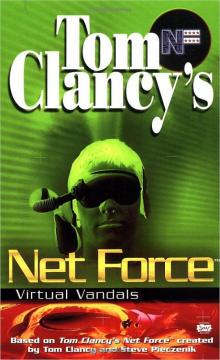 Virtual Vandals nfe-1
Virtual Vandals nfe-1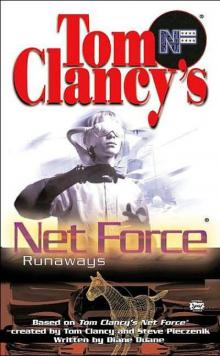 Runaways nfe-16
Runaways nfe-16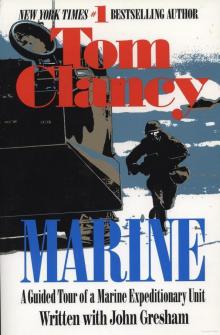 Marine: A Guided Tour of a Marine Expeditionary Unit tcml-4
Marine: A Guided Tour of a Marine Expeditionary Unit tcml-4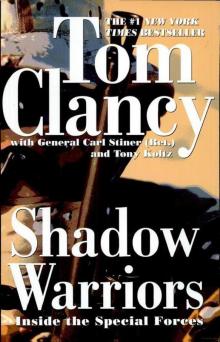 Shadow Warriors: Inside the Special Forces sic-3
Shadow Warriors: Inside the Special Forces sic-3 Jack Ryan Books 1-6
Jack Ryan Books 1-6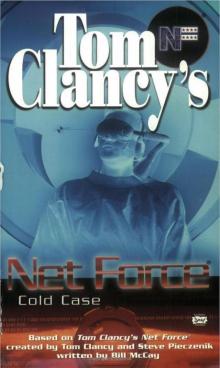 Cold Case nfe-15
Cold Case nfe-15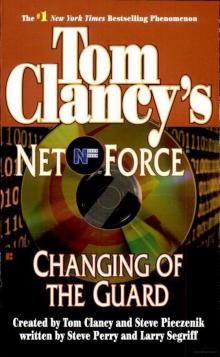 Changing of the Guard nf-8
Changing of the Guard nf-8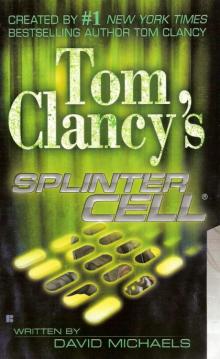 Splinter Cell sc-1
Splinter Cell sc-1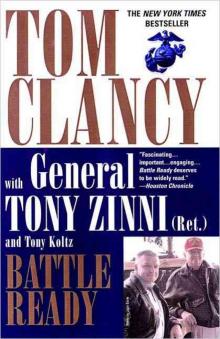 Battle Ready sic-4
Battle Ready sic-4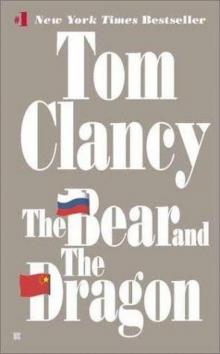 The Bear and the Dragon jrao-11
The Bear and the Dragon jrao-11 Fighter Wing: A Guided Tour of an Air Force Combat Wing tcml-3
Fighter Wing: A Guided Tour of an Air Force Combat Wing tcml-3 Patriot Games jr-1
Patriot Games jr-1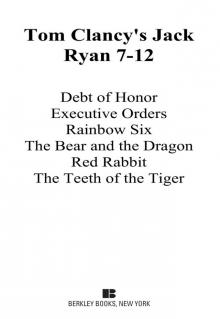 Jack Ryan Books 7-12
Jack Ryan Books 7-12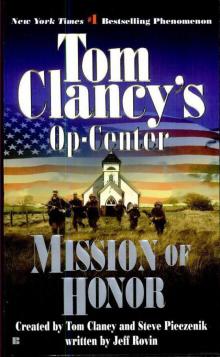 Mission of Honor o-9
Mission of Honor o-9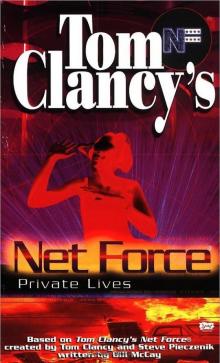 Private Lives nfe-9
Private Lives nfe-9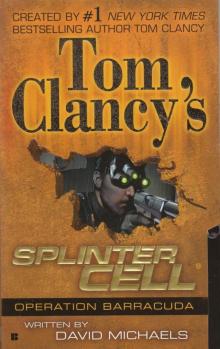 Operation Barracuda sc-2
Operation Barracuda sc-2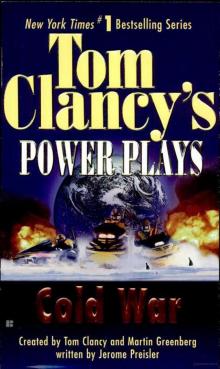 Cold War pp-5
Cold War pp-5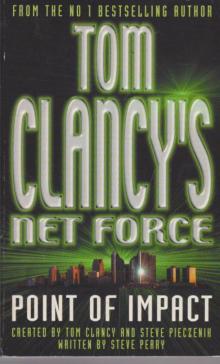 Point of Impact nf-5
Point of Impact nf-5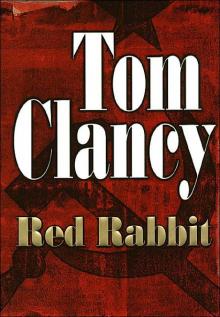 Red Rabbit jr-9
Red Rabbit jr-9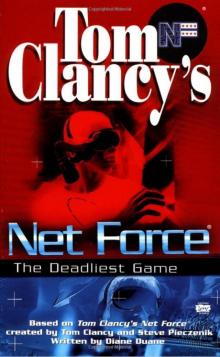 The Deadliest Game nfe-2
The Deadliest Game nfe-2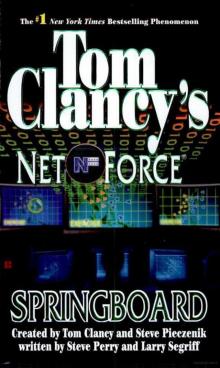 Springboard nf-9
Springboard nf-9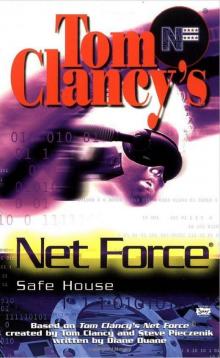 Safe House nfe-10
Safe House nfe-10 EndWar e-1
EndWar e-1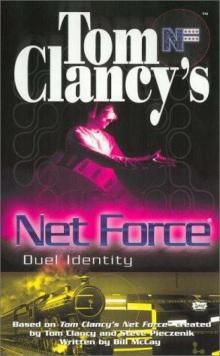 Duel Identity nfe-12
Duel Identity nfe-12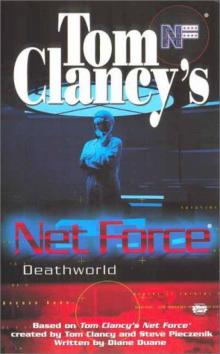 Deathworld nfe-13
Deathworld nfe-13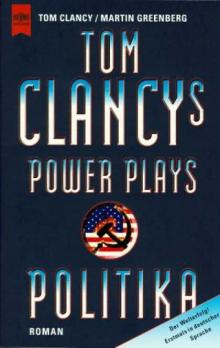 Politika pp-1
Politika pp-1 Rainbow Six jr-9
Rainbow Six jr-9 Tom Clancy's Power Plays 1 - 4
Tom Clancy's Power Plays 1 - 4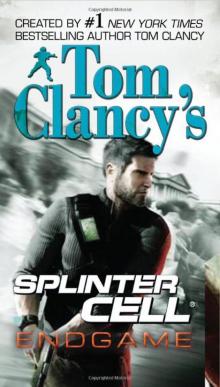 Endgame sc-6
Endgame sc-6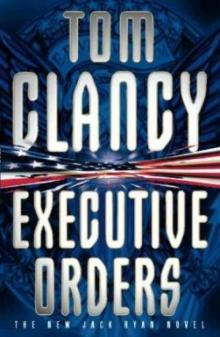 Executive Orders jr-7
Executive Orders jr-7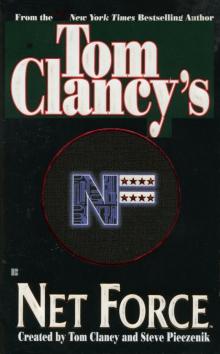 Net Force nf-1
Net Force nf-1 Call to Treason o-11
Call to Treason o-11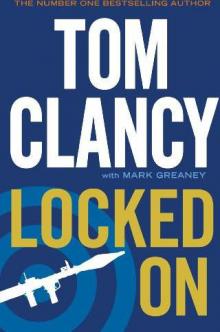 Locked On jrj-3
Locked On jrj-3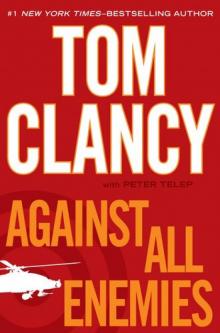 Against All Enemies
Against All Enemies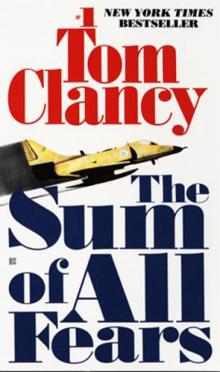 The Sum of All Fears jr-7
The Sum of All Fears jr-7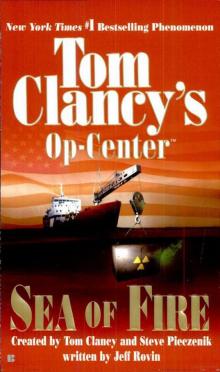 Sea of Fire o-10
Sea of Fire o-10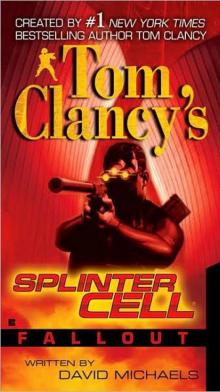 Fallout sc-4
Fallout sc-4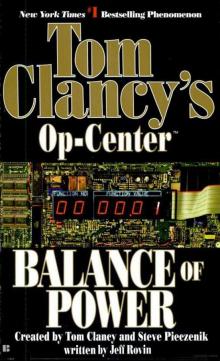 Balance of Power o-5
Balance of Power o-5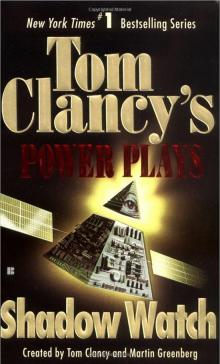 Shadow Watch pp-3
Shadow Watch pp-3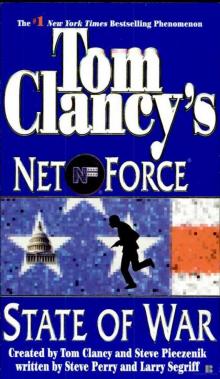 State of War nf-7
State of War nf-7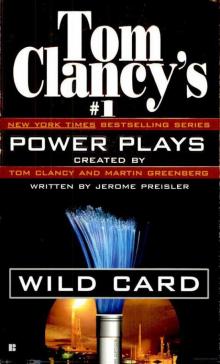 Wild Card pp-8
Wild Card pp-8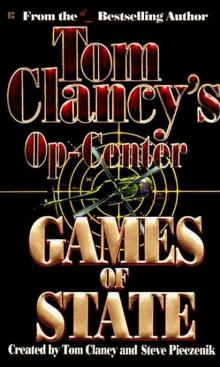 Games of State o-3
Games of State o-3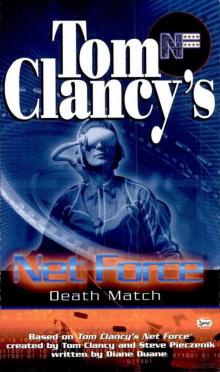 Death Match nfe-18
Death Match nfe-18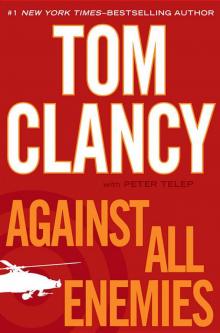 Against All Enemies mm-1
Against All Enemies mm-1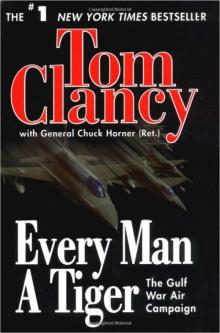 Every Man a Tiger: The Gulf War Air Campaign sic-2
Every Man a Tiger: The Gulf War Air Campaign sic-2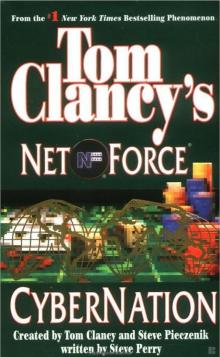 Cybernation nf-6
Cybernation nf-6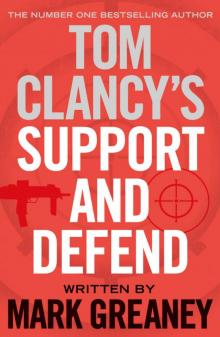 Support and Defend
Support and Defend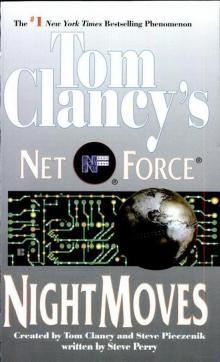 Night Moves nf-3
Night Moves nf-3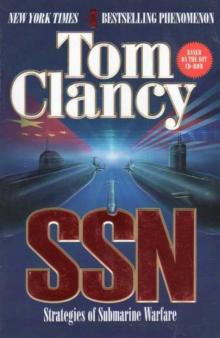 SSN
SSN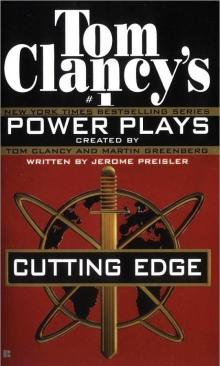 Cutting Edge pp-6
Cutting Edge pp-6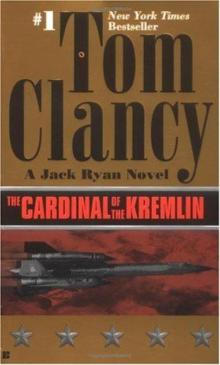 The Cardinal of the Kremlin jrao-5
The Cardinal of the Kremlin jrao-5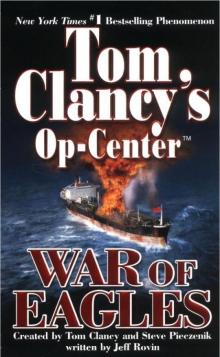 War of Eagles o-12
War of Eagles o-12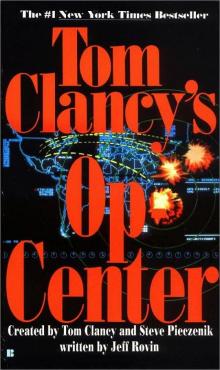 Op-Center o-1
Op-Center o-1 Mirror Image o-2
Mirror Image o-2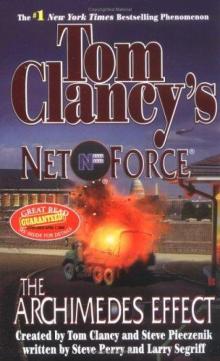 The Archimedes Effect nf-10
The Archimedes Effect nf-10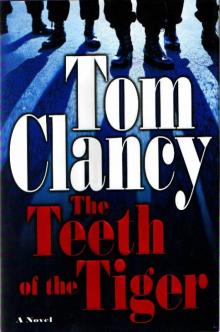 Teeth of the Tiger jrj-1
Teeth of the Tiger jrj-1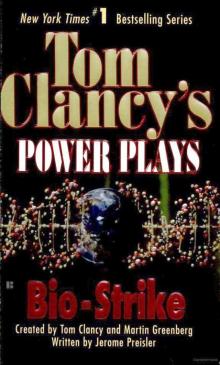 Bio-Strike pp-4
Bio-Strike pp-4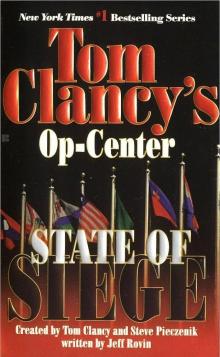 State of Siege o-6
State of Siege o-6 Debt of Honor jr-6
Debt of Honor jr-6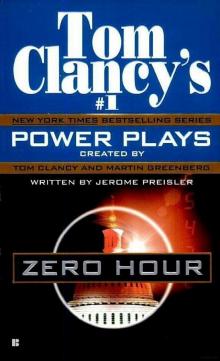 Zero Hour pp-7
Zero Hour pp-7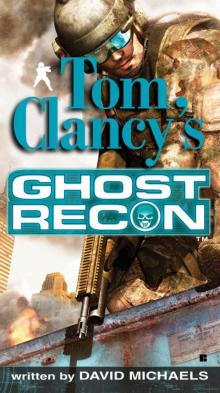 Ghost Recon gr-1
Ghost Recon gr-1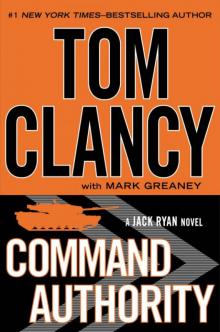 Command Authority jr-10
Command Authority jr-10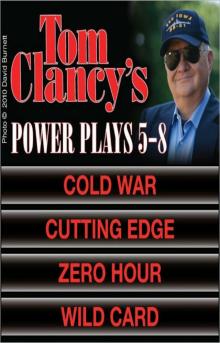 Tom Clancy's Power Plays 5 - 8
Tom Clancy's Power Plays 5 - 8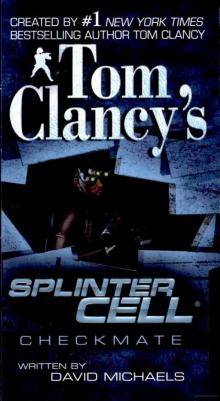 Checkmate sc-3
Checkmate sc-3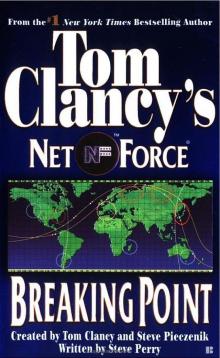 Breaking Point nf-4
Breaking Point nf-4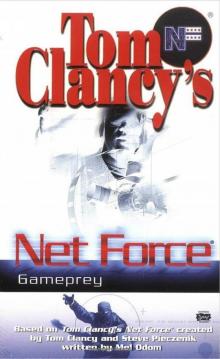 Gameprey nfe-11
Gameprey nfe-11 The Hunted e-2
The Hunted e-2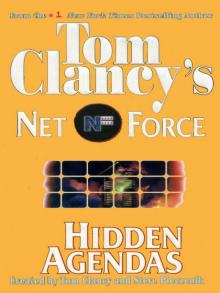 Hidden Agendas
Hidden Agendas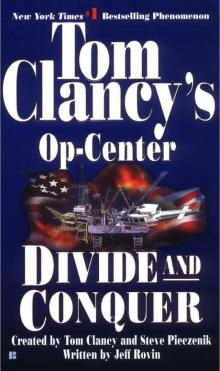 Divide and Conquer o-7
Divide and Conquer o-7